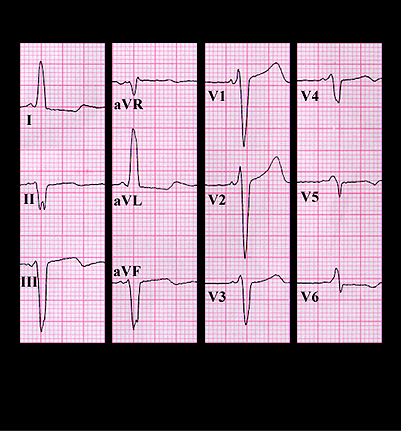Patients with Ebstein’s anomaly (downward displacement of the tricuspid valve into the body of the right ventricle) may have small atrial septal defects. While their ECGs most frequently shows complete RBBB, a right sided AV nodal bypass tract and ventricular pre-excitation is present in up to 15 % of cases. Thus, the presence of ventricular pre-excitation in a patient with a systolic murmur should suggest this diagnosis.

This ECG is from the patient with Ebstein’s anomaly and the wide complex tachycardia discussed in chapter 7 (pages 7.2.51 and 7.2.52). She had a soft systolic murmur that was best heard best in the 2nd and 3rd left intercostal spaces and a small atrial septal defect. The ECG shows ventricular pre-excitation with a delta wave that is negative in lead aVR and positive in leads I, aVL and V4-6, and left axis deviation. This results in a QRS complex that simulates left bundle branch block and localizes the bypass tract to the right lateral region of the AV ring.
